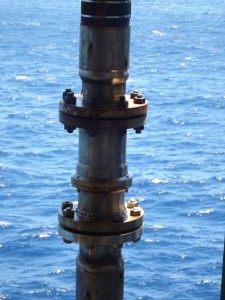What Is The Role Of Marine Breakaway Couplings?

The immense expanse of our seas has a multitude of resources, with offshore drilling activities playing a vital part in exploiting them. However, with the quest of resources comes the inevitable risk of oil spills, which can have devastating implications for marine ecosystems, coastal people, and the global environment.
In this essay, we will look into the essential function that marine breakaway couplings play in avoiding leaks while loading and unloading of hazardous liquids. at sea and protecting our seas.
What Are The Risks?
Offshore oil and gas activities are plagued by oil leaks at sea. These spills can occur for a variety of causes, including equipment failure, human mistake, or inclement weather. When they occur, the effects may be catastrophic, with oil slicks spreading across wide distances, destroying marine life, and creating long-term environmental damage.
The link between the platform and the floating production, storage, and offloading (FPSO) vessel or tanker is one of the key issues in preventing oil spills during offshore drilling activities. This link is necessary for the transportation of oil and other hydrocarbons, but it also carries a major danger if something goes wrong.
So, What Is The Role Of Marine Breakaway Couplings?
This is a situation where marine breakaway couplings come into play as an important safety component. MBCs are mechanical devices that are inserted in the pipeline or hose that links an offshore platform to a tanker or FPSO vessel. Their principal role is to enable a safe and automated disconnect in the case of excessive hose or pipeline tension or strain.
Lowering The Chance Of Catastrophic Failure
Marine breakaway couplings operate as a safety net, preventing catastrophic failures that might occur as a result of accidents or unanticipated occurrences such as vessel drift or equipment malfunction. MBCs reduce the danger of spills by quickly disconnecting the hose or pipeline.
Keeping Humans Unharmed
MBCs safeguard human life in addition to the environment. In the case of a catastrophic failure, the disconnect produced by an MBC decreases the possibility of explosions or flames on the platform or vessel, protecting offshore workers’ lives.
Lowering The Negative Impact On Environment
When an MBC operates, the amount of oil or hydrocarbons that can escape into the water is limited. This decrease in spill volume is crucial for minimising the environmental effect of any leak that occurs.
What Are MBCs Used For?
Marine breakaway couplings have been demonstrated to avoid oil spills at sea. They are often employed in offshore oil and gas activities, as well as other businesses involving the transport of hazardous products over water.
Oil Platforms That Are Situated Offshore
MBCs are frequently placed in the hoses that link offshore drilling sites to FPSO vessels or tankers. Because these platforms are frequently placed in remote and difficult areas, spill avoidance is a primary issue.
Loading and Unloading Chemical Substances
Marine breakaway couplings are also employed in oil and chemical product loading and unloading facilities. They guarantee that these compounds are transferred safely between storage tanks and transport boats.
Inter-Ship Transfers
Ship to ship transfers are very cost-effective, as the ship doesn’t have to berth on the jetty. This is especially true for large oil tankers. The port will not charge berthing fees and the time to berth and anchor can be reduced. All of this comes with a high risk of fire and environmental pollution, as there is always a possibility of leaking in the open sea, when the ship is not moored.
MBCs serve a critical role in avoiding spills during the transfer of oil and other bulk liquids between vessels during ship-to-ship transfer operations, particularly in places with unfavourable weather conditions.